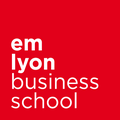Firm performance emerges from a complex interaction among the firm’s strategy, structure, and the competitive environment. Despite recognizing this complexity, researchers, consultants, and strategic decision makers often focus on the isolated effects of individual factors to forecast and analyze performance.
There is a mismatch between the methods we use to understand organizational performance and the reality of how performance is accomplished. Early management research by Henry Mintzberg and Danny Miller demonstrated organizations to be complex systems made up of a combination of interdependent parts. However, this analytical framework lost traction as research moved from understanding configuration of interdependent parts to linear relationships between readily measured variables. This also led to a shift in thinking about managerial choice, organizational systems, and organization-environment fit dynamics that left behind arguments of about how a configuration of factors inform performance and that those configurations may differ by firm, even those operating in the same environment. […]
Read more on Makerstories
or download the App on Google Play or the App Store
Su Lyn Cheng
Ph.D. student of entrepreneurship and organizations at emlyon business school, my research interest explores the challenges new ventures face under highly uncertain conditions, competing demands and limited resources. My aim is to advance our understanding of how new ventures cope with these tensions, and find their place within the complex organisational landscape.
More information on Su Lyn Cheng:
• Her CV online
Professor of Management and Organizations, and Director of the AIM Research Center for Work and Organization, I am an ethnographer of work and organizations. I study how organizations negotiate external pressures and the implications of these changes for professional control and expertise.
More information on Ruthanne Huising:
• Her CV online
• Her ResearchGate Page
Further readings…
If you would like to read more about the knowledge this method has generated please see the links below:



Recent Comments